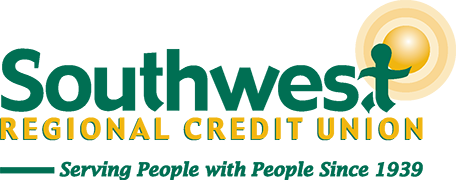
RRSP
RRSP – Registered Retirement Savings Plan
The RRSP was introduced in 1957 by the Government of Canada as a way for Canadians to save and grow their money to fund their retirement.
Opening an RRSP
- An RRSP is a registered account that can be opened by any Canadian individual with a valid social insurance number (SIN), who has earned income and has filed an income tax return.
- There is no minimum age restriction, but RRSP plans must be closed by the end of the year the annuitant/plan holder turns age 71.
- An individual RRSP is registered in your name only, and all funds in this account belong to you.
- A spousal RRSP is registered to your spouse or common-law partner and the funds in this account belongs to them. You contribute the funds to this account and receive the tax deduction for any contributions.
- You can have more than one RRSP at any given time, but you will need to carefully keep track of your RRSP contributions as the contribution limit is per person, not per plan.
Deduction Limit
- The RRSP deduction limit is often referred to as your contribution room, and represents:
- the amount you can contribute to your own RRSP
- the amount you can contribute to your spouse/common-law partner’s RRSP
- the maximum amount you can deduct on your income tax return
- The maximum RRSP limit is set annually by the Government of Canada.
- Your RRSP deduction limit generally consists of the total dollar value of:
- your unused deduction room at the end of the previous year
- 18% of your earned income in the previous year exceeding your pension adjustment but not exceeding the maximum annual RRSP limit
- You can obtain your most up-to-date RRSP deduction limit by:
- accessing “My Account” from the CRA website
- accessing “My CRA” mobile app
- calling Tax Information Phone Services (TIPS) at 1.800-267-6999
- reviewing the RRSP Deduction Limit Statement on your latest notice of assessment or reassessment
Contributions
- You can contribute to your individual RRSP until December 31st of the year you turn 71, provided you have available RRSP deduction limit room. You will receive an RRSP contribution receipt for the amount contributed. This receipt should be included with your income tax return.
- Regardless of your age, you can contribute to a spousal RRSP until December 31st of the year your spouse/common-law partner turns 71 provided you have available RRSP deduction limit room. You will receive an RRSP contribution receipt for the amount contributed. The RRSP contribution receipt will identify your name as the contributor, and your spouse or common-law partner’s name as the annuitant. This receipt should be included with your income tax return.
- If you contribute more than your allowable RRSP deduction limit, Canada Revenue Agency may require you to pay a tax of 1% per month on contributions that exceed your RRSP deduction limit by more than $2,000.
- Contributions can be invested in term deposits (index-linked, non-redeemable, or cashable), savings account, or mutual funds. *
- Contributions to an RRSP are generally deductible for income tax purposes.
- Income earned in an RRSP from interest, dividends, and capital gains is usually tax exempt as long as the funds remain in the plan.
- Eligible deposits in registered accounts have unlimited coverage through the Financial Services Regulatory Authority (FSRA).
Withdrawals
- RRSP accounts may be withdrawn, transferred to a Registered Retirement Income Fund (RRIF), or used to purchase an annuity.
- Tax will be withheld from all RRSP withdrawals. You will receive a T4RSP form that will include the total amount withdrawn from the RRSP account, and the amount of tax withheld. This form should be included with your income tax return.
- Withdrawals from an RRSP are generally taxable for income tax purposes.
- No tax is withheld from funds transferred directly from an RRSP to a RRIF.
- Individual RRSP accounts must be closed by December 31st of the year you turn 71.
- Spousal RRSP accounts must be closed by December 31st of the year your spouse or common-law partner (annuitant/plan holder) turns 71.
LLP - Lifelong Learning Plan
- The annual Lifelong Learning Plan limits RRSP withdrawals to $10,000 in a calendar year, and up to $20,000 in total to pay for you or your spouse or common-law partner to attend full-time education or training.
- You must meet all four eligibility requirements:
- you have an RRSP
- you are a resident of Canada
- student is enrolled or has received an offer to enroll before March of the following year as a full-time student in a qualifying educational program at a designated educational institution
- your repayment period must not have begun if you made a Lifelong Learning Plan withdrawal in a previous year
- You will need to complete form RC96 for each withdrawal you request from your RRSP. No tax will be withheld from funds withdrawn from your RRSP provided you meet the Lifelong Learning Plan conditions.
- Provided all Lifelong Learning Plan conditions are met at the time you withdraw funds from your RRSP, you can use the funds for any purpose. You are not limited to the amount of your tuition or education expenses.
- You have a period of 10 years to repay to your RRSP the total amount you withdrew until your Lifelong Learning Plan balance is zero.
HBP – Home Buyers’ Plan
- The annual Home Buyers’ Plan limits RRSP withdrawals to $60,000 to buy or build a qualifying home for yourself or a related person with a disability.
- You must meet all five eligibility requirements:
- be a resident of Canada when you withdraw funds from your RRSP and up to the time the home is bought or built
- considered a first-time home buyer
- have a written agreement to buy or build a qualifying home
- intend to occupy the home as your principal residence within one year after buying or building the home
- if you previously participated in the Home Buyers’ Plan, you may be able to participate again provided you meet all other HBP eligibility conditions and your repayable HBP balance is zero on January 1st of the year of the withdrawal
- You will need to complete form T1036 for each withdrawal you request from your RRSP. No tax will be withheld from funds withdrawn from your RRSP provided you meet the Home Buyers’ Plan conditions. You have a period of 15 years to repay to your RRSP the total amount you withdrew until your Home Buyers’ Plan balance is zero. Your repayments begin in the second year after the first withdrawal from your RRSP. (add two years to the year of the first withdrawal)
-
A temporary extension defers the start of the 15 year repayment period for an additional three years for participants making a first withdrawal between January 1, 2022 and December 31, 2025. The repayment period would start in the fifth year following the year of the first withdrawal from your RRSP. (add five years to the year of the first withdrawal)
* Mutual funds and other securities are offered through Aviso Wealth, a division of Aviso Financial Inc. Unless otherwise stated, mutual funds, other securities and cash balances are not covered by the Canada Deposit Insurance Corporation or by any other government deposit insurer that insures deposits in credit unions.
Contact your branch to learn more about investments.
Financial Specialists are available in every branch to help you select the product best suited to meet your financial goals.



